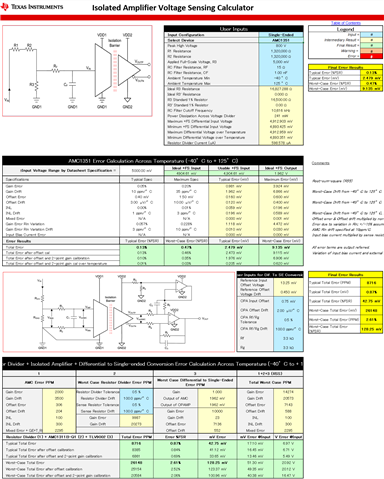Other Parts Discussed in Thread: TLV313-Q1
Tool/software:
I am designing a circuit to detect voltage with a detection range of 800V through isolation using the AMC1351-Q1.
I am considering the circuit constants using the "IsolatedAmplifierVoltageSensingExcelCalculatorRevC.xlsx". Could you please provide guidance on the design around the Differential to Single-ended Conversion OpAmp?
Assuming the use of TLV313-Q1 as per the reference circuit diagram 8-3 in the AMC1351-Q1 datasheet, should I input the values of OPA Input Offset and OPA Offset Drift from the TLV313-Q1 datasheet, which are 0.75mV and 2.00 µV/°C?
I would like to know the design method for the reference voltage.
The calculated Reference Input Offset Voltage from the calculation sheet is 13.25mV. Should I determine the reference voltage divider resistors R3 and R4 to achieve 13.25mV?
Additionally, if you have recommended components for the Ref power supply op-amp and the Differential to Single-ended Conversion OpAmp, please let me know. Is it okay to use TLV313-Q1 for both?


